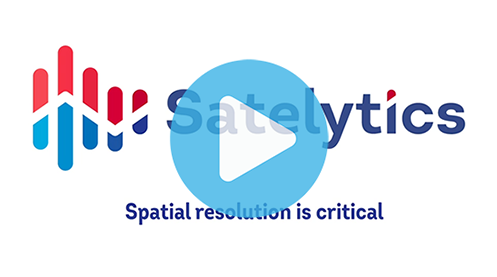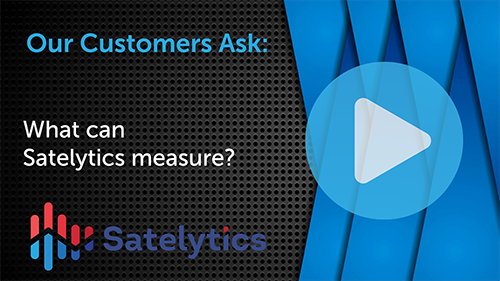
• General

• General
Spatial resolution is a topic we at Satelytics emphasize repeatedly out of necessity. In the world of geospatial analytics, spatial resolution is critical. Only high-resolution imagery analyzed by our AI-powered algorithms yields actionable results. Specific location coordinates, accurate measurements, and timely results: all are required to make alerts actionable and all are possible when analyzing imagery with high spatial resolution.
Consider the following video demonstrating the spectrum of spatial resolutions used across the remote sensing industry:

Objects can only be identified if they are larger than the spatial resolution offered by the sensor. For example, if a sensor with 100-meter resolution is being used to capture imagery, an event like a pipeline leak wouldn’t be detected unless it was the size of a football field or larger!
All of our non-methane services employ sensors with 30-cm to 50-cm resolutions — about the size of your dinner plate. Our extensive suite of algorithms addresses vegetation, liquid leaks, encroachments, metal concentrations, water quality, state of construction, and more.

To measure methane, Satelytics analyzes high-resolution shortwave infrared imagery with 3.7-meter spatial resolution (in compliance with U.S. Government limits). This allows our algorithms to quantify results with specific location, concentration, and flow rate.
Employing Satelytics means taking advantage of the highest spatial resolution available, giving you a closer look at what’s going on in your asset territories and unlocks additional solutions benefiting your entire organization. What do you need to see?